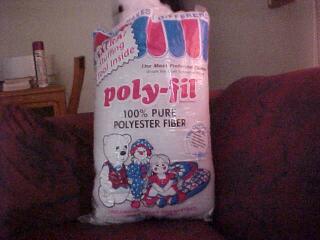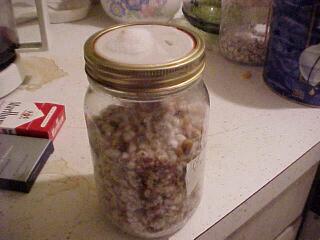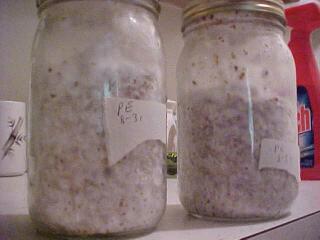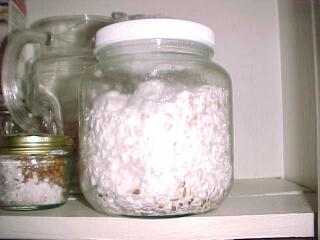


|
Quart Jar Synopsis V1.00b Compiled by KB, based on ideas by Workman, Mycofile, Mycomountain, Hippie3 and Others, as well as the main ideas of The Mushroom Cultivator (Stamets). Materials
needed: Widemouth Canning Jars, Quart
Size
Substrates which can be used: Almost all types of grains or birdseed can be used. Finch seed, rye grain, Wild BirdFood, amaranth, Quinoa, etc. Generally one can experiment and find the grain or seed which best suits their purposes. Keep in mind some simple rules of thumb when using a grain. The smaller grains needs less time for pre-boiling (generally in the 20-30 minute range. The larger grains such as wheat or rye require a good hour. The main point is to get the water content correct. Correct water content will result in grain/seed which easily shakes and does not clump. Preparation of the Grain: Get a large pan. Add organic spring water. Bring water to a boil. Fill with desired amount of grain. Pour an amount of organic spring water about a 1/4 inch or so until it's above the grain. Reduce temperature to a very low setting, so that it simmers. Stir thoroughly, then cover pot with lid. Simmer for one hour, checking once ever ten minutes or so to stir and make sure that too much water hasn't boiled off. Add water if necessary. When your hour is up, dump the contents of the pan into a collander. Let excess water strain thoroughly. Allow grain to cool to room temperature. If any clumping has occured, then simply break it up with a spoon. Preparation of the Jars: Take your tin lid and then with a scissors or other sharp instrument, make a hole about the size of a pencil. Take a bit of Polyfill and pull it through the hole until the hole is packed extremely tight. Optionally, you can make another small incision as an innoculating hole. (Make sure to tape it if you do). Cover the entire lid with tin foil.
Sterilizing the
Jars: You must use a pressure cooker.
Optimum time appears to be about 60 minutes at 15PSI. If using
Rye Grain, you may want to up the cooking time to slightly 75
minutes. Innoculating the Jars: If using a syringe, simply squirt about 5cc's into the jar, rotating the tip so that a good bit of grain is touched. If using Agar: add lysol sprayed petri dishes and remove plastic wrap seal. Rinse hands again in alcohol and loosen quart jar lids, open petri dish with petri lid angled over the rest of the dish and cut out a small section of agar with a flame sterilized blade. Drop in jar and tighten lid. Shake to break up grains and incubate. ------------------------ Tip (Workman): Baby sitting the jars isn't necessary and neither is getting all the grains to break up individually. Concentrate on the contamination vector. Even the best looking cooked grains are useless if moldy. Try exposing petri plates in the various stages of your work in areas that should be clean. Label and check for molds to pinpoint the procedure that is inadequate. ------------------------ Re-cover with foil. Put in a dark place for a few days. Check back and see if mycelium has started to colonize. If it has, then shake the container well. Your goal is to try and hit as many uncolonized kernels with colonized ones. Once done shaking, place jars away again. Check again in several more days and see if colonization is complete. If not, shake again. Keep a careful eye out for any contaminants. If all is well, you have a clean culture of grain, now ready to be used as spawn or ready to be cased.
|




